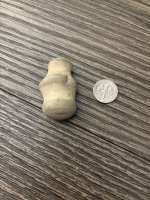By Erik Neumann - Jefferson Public Radio, Juliet Grable
JANUARY 13, 20241:46 PM ET Originally published January 12, 20246:23 PM ET
 The largest dam removal in U.S. history entered a critical phase this week, with the lowering of dammed reservoirs on the Klamath River.
The largest dam removal in U.S. history entered a critical phase this week, with the lowering of dammed reservoirs on the Klamath River.
On Thursday, the gate on a 16-foot-wide bypass tunnel at the base of Iron Gate dam, the lowest of those slated to be removed, was opened from a crack to 36 inches.
Amy Cordalis stood in the dawn chill to witness the first big surge as the gate was widened. She's an attorney and Yurok Tribe member who has played a critical role in advocating for dam removal. As water poured through the tunnel, she could hear boulders rolling and tumbling. The water turned to dark chocolate milk as decades of pent-up sediment surged through.
"This is historic and life-changing," Cordalis said. "And it means that the Yurok people have a future. It means the river has a future; the salmon have a future."
Mike Belchik, a senior policy adviser for the Yurok Tribe, was also there to witness the controlled breach.
"It's kind of surreal," said Belchik, who has worked on Klamath River water issues for the tribe for nearly 30 years. "I don't know why we had such confidence that it was going to happen. But we did. We always knew it would happen."
One hundred seventy-three feet high, with a 740-foot crest, Iron Gate is an earth embankment dam with a skinny, many-fingered reservoir behind it. The lowering — or drawdown — of Iron Gate and two other reservoirs on the Klamath River will make way for the removal of three remaining hydroelectric dams that are part of the Lower Klamath Project in Northern California and southern Oregon.
For decades, these barriers have blocked salmon, steelhead and Pacific lamprey from accessing habitat above them and contributed to poor water quality below. The Klamath River was once the third-largest salmon producer on the West Coast, but in the time since the dams were constructed, the Klamath's coho and Chinook runs have dwindled to a fraction of their historic abundance.
When tribal activists first started calling for the removal of four Klamath River dams in the late 1990s, people thought they were "crazy," said Leaf Hillman, an elder of the Karuk Tribe who helped launch the campaign. "We've never really considered any other alternative to removing dams. And so it was a fight that we were committed to, and that we knew that we had to win. And it's been an intergenerational struggle."
A massive die-off of Chinook salmon in 2002 catalyzed increased activism around getting the dams removed. An estimated 34,000 to 78,000 fish died. The loss of these fish didn't just mean the loss of a fun summer fishing activity, said Brook Thompson, a Yurok Tribe member who was 7 years old at the time and is now in her late 20s. "Those salmon to me are the connections I have with my relatives," she explained. "In a day, that was all gone."

The fight to save the Klamath River's salmon shaped the lives and careers of people like Thompson, who grew up holding up posters at protests. Today, she is pursuing a Ph.D. that focuses, in part, on how to incorporate Native knowledge into policy. For her, it all comes back to the river and the fish that are so central to Native diets, ceremonies and identity.
"Yurok spirituality and Yurok ways of life cannot exist without having the salmon here," she said.
While activists celebrate the rebirth of a river, the massive project brings uncertainty to others, particularly residents who live near the dams. In the small town of Copco Lake, Calif., losing their namesake lake means losing the centerpiece of their community. It also brings heightened concerns about how the reshaped landscape will affect their property values and their ability to safeguard their homes from wildfires in a high-risk region.
Up until now, vehicles could easily access the lakeshore to pump water to fight fires, and aircraft could dip their buckets into the lake, according to Francis Gill, a Copco Lake resident and fire chief for the community's volunteer fire department. Gill fears that the community will be much more exposed to fire without the lake as a buffer.
"Now, instead of having that lake as a huge barrier, we get the potential for fire to jump the river, get from one side to the other easily," Gill said. "Especially just with the way the wildfires have been getting the last 10 years. They just blow up so fast and get so big, so quickly."
Other large dam removals on the Penobscot River in Maine and on the Elwha River in Washington state have shown that rivers — and the fish that depend on them — can recover quickly. The successful campaign and restoration of the Klamath watershed will no doubt inform other dam removal efforts.
"Every time we do this, and we do this at a big scale, we learn new things about the legal pathways," said Dave Owen, a law professor at the University of California, San Francisco. "It just helps people see that this is possible, and that it can be highly successful."
Advocates and analysts are eyeing four dams on the Lower Snake River in Washington as the next big dam removal in the queue. Owen says that who owns the dams and what the dams are used for greatly impacts the politics around their removal.
"Along the Snake River, you have irrigators who rely on some of those reservoirs; you also have barge traffic, that's conveying wheat," Owen said. These factors make the Snake River dams a "harder case." Still, the removal of the Klamath River dams "makes action on the Snake River more likely than it was a few years ago," he said.
For the next week, water will flow through the bypass tunnel at an average rate of 2,200 cubic feet per second, draining down Iron Gate reservoir between two and four feet per day. Later this month, J.C. Boyle, the uppermost of the three dams, will be breached, followed by Copco 1. By June, the Klamath River should be flowing more or less within its historic channel, and the work of dismantling the structures can begin.
Advocates are quick to point out that dam removal alone will not save the Klamath River's salmon runs. However, removing the barriers will open up 76 miles of coho habitat and over 400 miles of Chinook habitat, says Shari Witmore, a fish biologist at NOAA Fisheries.
If modeling is correct, as many as 80% more Chinook salmon could return to the basin within about 30 years after the dams are removed. Ocean harvest could increase by as much as 46%. But this will depend in part on restoring important tributaries, including the cold spring-fed rivers in the upper Klamath Basin, which have been compromised with diking and draining of wetlands.
"Once we restore that, we put this basin back together," Witmore says. "That creates a lot of resilience over time with climate change, and it buffers against multi-year droughts."
Cordalis, the Yurok Tribe member, agrees that more work lies ahead. But she's also looking forward to fulfilling a simple personal goal.
"Fishing," she said. "I want to go fishing."
SOURCE
JANUARY 13, 20241:46 PM ET Originally published January 12, 20246:23 PM ET
On Thursday, the gate on a 16-foot-wide bypass tunnel at the base of Iron Gate dam, the lowest of those slated to be removed, was opened from a crack to 36 inches.
Amy Cordalis stood in the dawn chill to witness the first big surge as the gate was widened. She's an attorney and Yurok Tribe member who has played a critical role in advocating for dam removal. As water poured through the tunnel, she could hear boulders rolling and tumbling. The water turned to dark chocolate milk as decades of pent-up sediment surged through.
"This is historic and life-changing," Cordalis said. "And it means that the Yurok people have a future. It means the river has a future; the salmon have a future."
Mike Belchik, a senior policy adviser for the Yurok Tribe, was also there to witness the controlled breach.
"It's kind of surreal," said Belchik, who has worked on Klamath River water issues for the tribe for nearly 30 years. "I don't know why we had such confidence that it was going to happen. But we did. We always knew it would happen."
One hundred seventy-three feet high, with a 740-foot crest, Iron Gate is an earth embankment dam with a skinny, many-fingered reservoir behind it. The lowering — or drawdown — of Iron Gate and two other reservoirs on the Klamath River will make way for the removal of three remaining hydroelectric dams that are part of the Lower Klamath Project in Northern California and southern Oregon.
For decades, these barriers have blocked salmon, steelhead and Pacific lamprey from accessing habitat above them and contributed to poor water quality below. The Klamath River was once the third-largest salmon producer on the West Coast, but in the time since the dams were constructed, the Klamath's coho and Chinook runs have dwindled to a fraction of their historic abundance.
When tribal activists first started calling for the removal of four Klamath River dams in the late 1990s, people thought they were "crazy," said Leaf Hillman, an elder of the Karuk Tribe who helped launch the campaign. "We've never really considered any other alternative to removing dams. And so it was a fight that we were committed to, and that we knew that we had to win. And it's been an intergenerational struggle."
A massive die-off of Chinook salmon in 2002 catalyzed increased activism around getting the dams removed. An estimated 34,000 to 78,000 fish died. The loss of these fish didn't just mean the loss of a fun summer fishing activity, said Brook Thompson, a Yurok Tribe member who was 7 years old at the time and is now in her late 20s. "Those salmon to me are the connections I have with my relatives," she explained. "In a day, that was all gone."
The fight to save the Klamath River's salmon shaped the lives and careers of people like Thompson, who grew up holding up posters at protests. Today, she is pursuing a Ph.D. that focuses, in part, on how to incorporate Native knowledge into policy. For her, it all comes back to the river and the fish that are so central to Native diets, ceremonies and identity.
"Yurok spirituality and Yurok ways of life cannot exist without having the salmon here," she said.
While activists celebrate the rebirth of a river, the massive project brings uncertainty to others, particularly residents who live near the dams. In the small town of Copco Lake, Calif., losing their namesake lake means losing the centerpiece of their community. It also brings heightened concerns about how the reshaped landscape will affect their property values and their ability to safeguard their homes from wildfires in a high-risk region.
Up until now, vehicles could easily access the lakeshore to pump water to fight fires, and aircraft could dip their buckets into the lake, according to Francis Gill, a Copco Lake resident and fire chief for the community's volunteer fire department. Gill fears that the community will be much more exposed to fire without the lake as a buffer.
"Now, instead of having that lake as a huge barrier, we get the potential for fire to jump the river, get from one side to the other easily," Gill said. "Especially just with the way the wildfires have been getting the last 10 years. They just blow up so fast and get so big, so quickly."
Other large dam removals on the Penobscot River in Maine and on the Elwha River in Washington state have shown that rivers — and the fish that depend on them — can recover quickly. The successful campaign and restoration of the Klamath watershed will no doubt inform other dam removal efforts.
"Every time we do this, and we do this at a big scale, we learn new things about the legal pathways," said Dave Owen, a law professor at the University of California, San Francisco. "It just helps people see that this is possible, and that it can be highly successful."
Advocates and analysts are eyeing four dams on the Lower Snake River in Washington as the next big dam removal in the queue. Owen says that who owns the dams and what the dams are used for greatly impacts the politics around their removal.
"Along the Snake River, you have irrigators who rely on some of those reservoirs; you also have barge traffic, that's conveying wheat," Owen said. These factors make the Snake River dams a "harder case." Still, the removal of the Klamath River dams "makes action on the Snake River more likely than it was a few years ago," he said.
For the next week, water will flow through the bypass tunnel at an average rate of 2,200 cubic feet per second, draining down Iron Gate reservoir between two and four feet per day. Later this month, J.C. Boyle, the uppermost of the three dams, will be breached, followed by Copco 1. By June, the Klamath River should be flowing more or less within its historic channel, and the work of dismantling the structures can begin.
Advocates are quick to point out that dam removal alone will not save the Klamath River's salmon runs. However, removing the barriers will open up 76 miles of coho habitat and over 400 miles of Chinook habitat, says Shari Witmore, a fish biologist at NOAA Fisheries.
If modeling is correct, as many as 80% more Chinook salmon could return to the basin within about 30 years after the dams are removed. Ocean harvest could increase by as much as 46%. But this will depend in part on restoring important tributaries, including the cold spring-fed rivers in the upper Klamath Basin, which have been compromised with diking and draining of wetlands.
"Once we restore that, we put this basin back together," Witmore says. "That creates a lot of resilience over time with climate change, and it buffers against multi-year droughts."
Cordalis, the Yurok Tribe member, agrees that more work lies ahead. But she's also looking forward to fulfilling a simple personal goal.
"Fishing," she said. "I want to go fishing."
SOURCE






